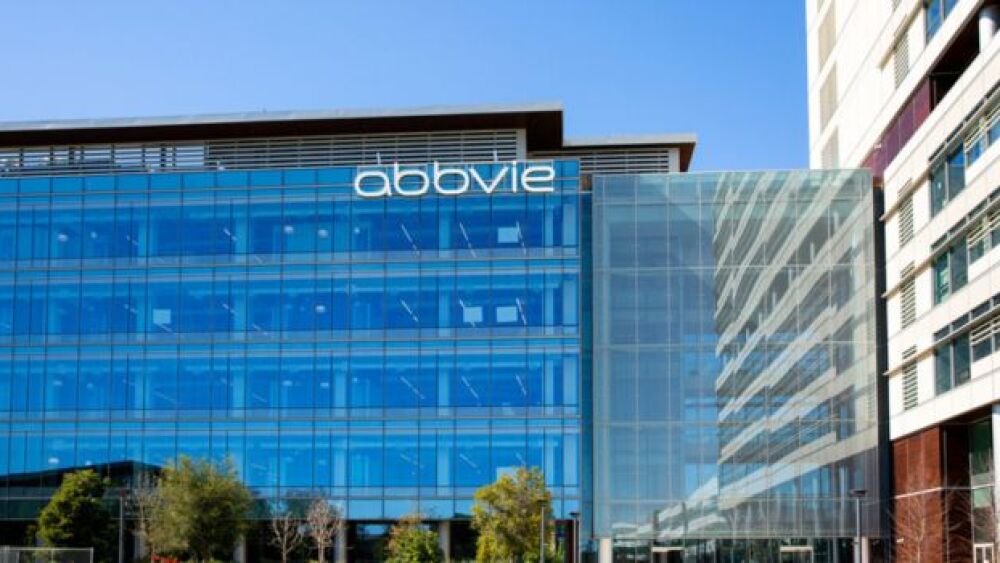As biosimilars and next-generation treatments for Crohn’s disease enter the market, AbbVie will be knocked from its place of longtime dominance, contends data and analytics firm GlobalData.
Pictured: AbbVie corporate office/iStock, vzphotos
With the U.S. launch of the first Humira (adalimumab) biosimilars in July, the Crohn’s disease market is poised for a “transformative” shift as AbbVie loses its iron grip on the patient population, according to a new report released Thursday from data and analytics company GlobalData.
Over the next few years, GlobalData predicts another company will displace the pharma giant in the Crohn’s disease (CD) market, driven by advancements in biologics and oral small molecules.
Second-quarter 2023 sales already revealed hastily slipping revenues for Humira—a 25% drop compared to the same period last year, bringing in $4 billion. Erosion for the year is projected at 35%. AbbVie is leaning heavily on Skyrizi, its anti-IL-23 drug, and Rinvoq, its oral JAK inhibitor for patients after anti-Tumor Necrosis Factor (TNF) treatment failure, to bolster sales amidst the decline.
AbbVie has enjoyed its standing as market leader for Crohn’s with sales of $2.7 billion last year for the indication in the eight major markets, according to GlobalData. But that dominance is quickly eroding.
“The recent launch of adalimumab biosimilars not only will cause an overall reduction in the cost of treatment, but also provide the opportunity for another company to knock AbbVie from its standing as the market leader within CD,” Adeleke Badejo, senior analyst of immunology at GlobalData, said in a statement.
Humira’s competition had already been heating up with the approval of Janssen’s Stelara—an IL-23 and IL-12 blocker—with $2.1 billion in 2022 sales in the market. Takeda’s Entyvio binds to the α4β7 integrin to keep white blood cells from entering the gastrointestinal tract to reduce inflammation. It took $1.7 billion of Crohn’s sales in the major markets last year.
However, as GlobalData points out, Stelara and Entyvio are viewed and prescribed as second- or third-line therapies following failure with Humira or other anti-TNF biologics. All three therapies now face decline with the approval and commercialization of biosimilars, some already entering the market and others coming soon.
Badejo points out the strategy for most companies hoping to knock AbbVie off its pedestal appears to be targeting the market already exposed to biologic treatment for their disease, instead of attempting to create a next-generation replacement of Humira.
In clinical trials, 36% of patients on Humira achieved and maintained remission after 56 weeks, a 4% drop from the number that had achieved and maintained remission at 26 weeks, leaving a large percentage of the Crohn’s population who don’t find long-lasting relief of symptoms on the biologic.
“This strategy of developing therapies for the TNF-refractory patient group is a viable approach,” Badejo said, anticipating that competition within that population will heat up five to 10 years from now.
Janssens’ Tremfya, currently approved for psoriasis and psoriatic arthritis, is hoping to push into the Crohn’s space. A Phase II trial showed that 73% of adults with severe Crohn’s disease achieved clinical remission when treated with the drug at its highest dose. Approval and launch of the treatment for this indication is anticipated in the next two to three years.
Eli Lilly’s human monoclonal antibody Mirikizumab entered the Japanese market as the first IL-23p19 inhibitor for ulcerative colitis earlier this year. It’s currently in Phase III testing for Crohn’s.
“With a focus on biologic-exposed CD patients, novel therapies for TNF-refractory individuals are gaining prominence,” GlobalData concluded.
Kate Goodwin is a freelance life science writer based in Des Moines, Iowa. She can be reached at kate.goodwin@biospace.com and on LinkedIn.






